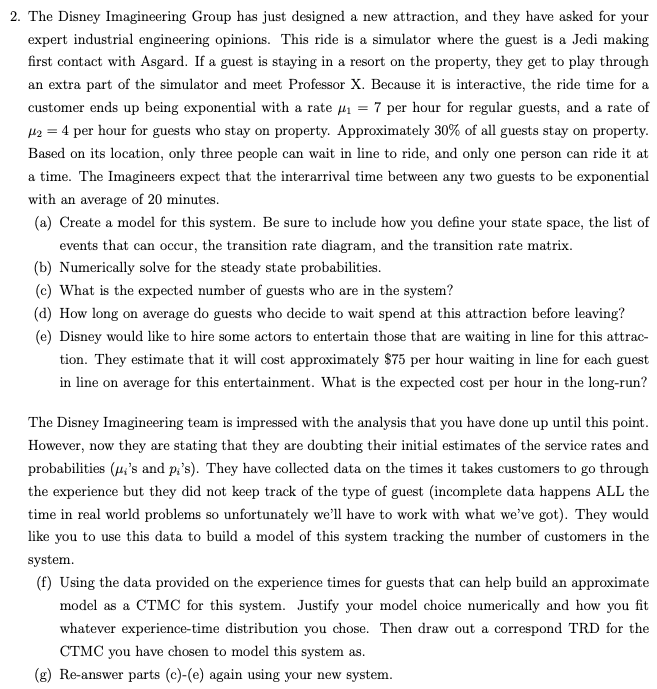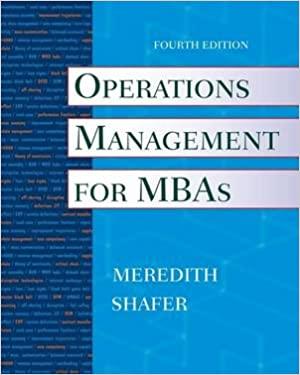
| Mean | 0.902065831 |
| Standard dev. | 1.329461479 |
The Disney Imagineering Group has just designed a new attraction, and they have asked for your expert industrial engineering opinions. This ride is a simulator where the guest is a Jedi making first contact with Asgard. If a guest is staying in a resort on the property, they get to play through an extra part of the simulator and meet Professor X. Because it is interactive, the ride time for a customer ends up being exponential with a rate 1=7 per hour for regular guests, and a rate of 2=4 per hour for guests who stay on property. Approximately 30% of all guests stay on property. Based on its location, only three people can wait in line to ride, and only one person can ride it at a time. The Imagineers expect that the interarrival time between any two guests to be exponential with an average of 20 minutes. (a) Create a model for this system. Be sure to include how you define your state space, the list of events that can occur, the transition rate diagram, and the transition rate matrix. (b) Numerically solve for the steady state probabilities. (c) What is the expected number of guests who are in the system? (d) How long on average do guests who decide to wait spend at this attraction before leaving? (e) Disney would like to hire some actors to entertain those that are waiting in line for this attraction. They estimate that it will cost approximately $75 per hour waiting in line for each guest in line on average for this entertainment. What is the expected cost per hour in the long-run? The Disney Imagineering team is impressed with the analysis that you have done up until this point. However, now they are stating that they are doubting their initial estimates of the service rates and probabilities ( i 's and pi 's). They have collected data on the times it takes customers to go through the experience but they did not keep track of the type of guest (incomplete data happens ALL the time in real world problems so unfortunately we'll have to work with what we've got). They would like you to use this data to build a model of this system tracking the number of customers in the system. (f) Using the data provided on the experience times for guests that can help build an approximate model as a CTMC for this system. Justify your model choice numerically and how you fit whatever experience-time distribution you chose. Then draw out a correspond TRD for the CTMC you have chosen to model this system as. (g) Re-answer parts (c)-(e) again using your new system







